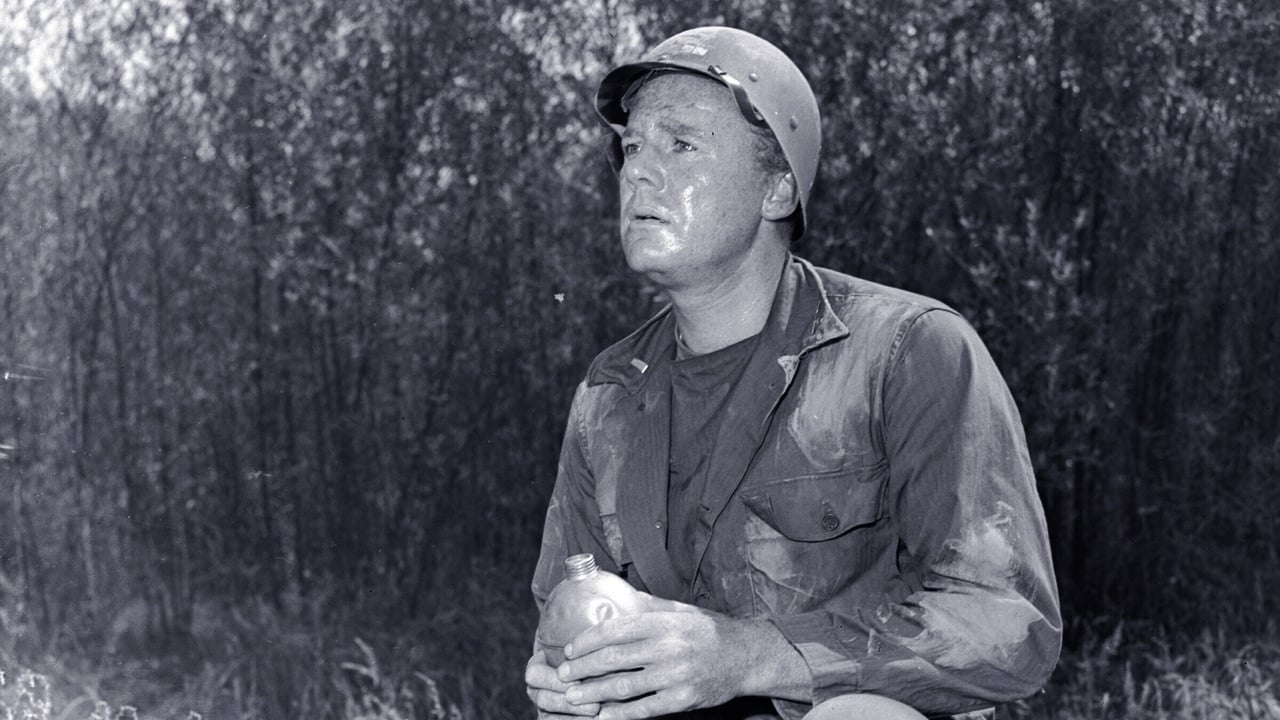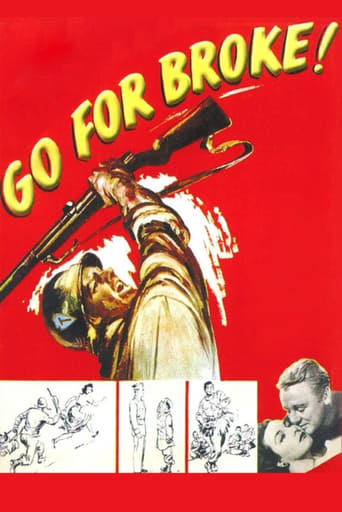

*Spoiler/plot- 1951, The story of 442nd American Nisei WW2 regimental combat team work in Italy and France. Also their saving the 36th Texas Division 'Lost Battalion' from the 'Black' Mountains of France near the border with Germany.*Special Stars- Van Johnson*Theme- Valor and bravery comes in every culture, color or race.*Trivia/location/goofs- Hollywood film. Copyright free. Some actual newsreel footage was included in this film along with Hollywood studio scenes. The 442nd American Nisei WW2 regimental combat team was the most decorated military unit during WW2.*Emotion- An enjoyable and rather significant story to come out of WW2 about the injustice and ignorance about Japanese Americans post Pearl Harbor attack.
... View MoreOthers have said it quite well -- an otherwise routine war film with the all-too-familiar stock characters (the stuffy officer who eventually loosens up, the belly-aching enlisted man, the bigoted sergeant, the lovable underdog, the kid brother) spiced up by a very intriguing and little-known story about a regiment made up entirely of Japanese-American volunteers. The film-makers deserve praise for making their points with humor rather than "speechifying." Look fast for The Six Million Dollar Man's Oscar Goldman (Richard Anderson) as the officer struggling with the Japanese names in the roll call and Hogan's Heroes' Sgt. Schultz (a younger, much leaner and almost unrecognizable John Banner) as the surrendering German officer stunned to be captured by Asian soldiers.
... View MoreI just saw this movie yesterday. I got a DVD with three war movies on it for my birthday and this was one of the three. It's the true story of the 442nd RCT and the 100th Battalion. Their motto was Go For Broke! Van Johnson is Lieutenant Mike Grayson. Grayson, aformer member of the 36th Division, is assigned to the 442nd and 100th Battalion. They were made up of Japanese-Americanvolunteers from relocation camps. That's a euphamism forconcentration camps. They were trained at Camp Shelby,Alabama, and sent first to Italy. During the Italian campaign, they were pinned down by the Germans but took their objectives. When they captured German soldiers in Italy, the German commander asks Grayson: "What kind of soldiers are these? Chinese?" Grayson replies: "Japanese. Didn't Hitler tell you? Japansurrendered and they're fighting on our side now." Grayson'sprejudices slowly evaporate when he realizes that his soldiers are better than any of those before. Then they're sent to France.Grayson's transferred to Headquarters but goes out with the 36th Division and is cut off by the Germans. The 442nd RCT and the100th Battalion are sent to rescue him.
... View MoreBeing a third generation Japanese-American (Sansei), and having my parents interned in the camps, this movie has a special place in my heart. Robert Pirosh did an incredible job in getting so much information about the Japanese- American situation: the camps, the differences between the Hawaiian and State- side Japanese (Kotonks and Kanakas), the different views of the war and even using a Japanese curse word as a password! I was so impressed and pleased with the results.The movie follows the exploits of the 442, the first all-Nisei (Japanese- American) Regimental combat team in WWII. In early 1942, all the Japanese- Americans in California, Seattle, Oregon and Hawaii were uprooted from their homes and put into camps. All the volunteers were from the 10 internment camps throughout the western states. They felt that this was the only way to prove to the U. S. that they were as patriotic as anybody else, in fact most of them were American Citizens! Since they had nothing to lose, but their lives, their motto was "GO FOR BROKE!" and that's what they did. They are today the most decorated battalion in the history of the U.S. military and proved something that they shouldn't have to be proved, that they were Americans!Van Johnson is used as the "white man" foil, to show how the rest of the country looked at the Japanese-American, and he does a great job. He starts off as a bigot, but as he begins to understand and respect his troops, he becomes one of them. There's a funny scene where one of his men call him "BAKATARE",which is a curse word close to "Damn, stupid...." and tells him that the soldier is being very polite, he's bowing as he says this. This film has everything: humor, action, great characters and... truth!
... View More